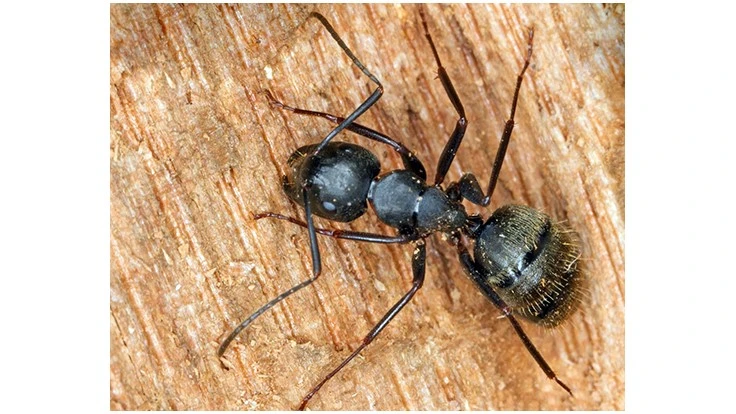
You arrive at a home to do a routine service and the customer lets you know they’ve been seeing ants inside. Depending on where you are located, the offending ants could be one of several to many different species. You’ll need to identify the ant because the type or species of ant will determine your approach to inspection and treatment.
Is the ant a soil- or wood-nesting ant or is it opportunistic in nest site selection? Is it a type that is polydomous (many nest sites) or polygynous (many queens)? Is it a species that will respond to baits well enough to affect control? Soil nesting ants will be found near ground level while wood-nesters typically associate with moist wood. Opportunistic species that are polydomous and polygynous are the most difficult ants to control due to the widespread nature of their infestations around structures.
The fastest way to control ants is finding and treating the ant colony or colonies directly which with polydomous species is easier said than done. In most all cases, most of the infestation originates from outside with possible satellite colonies indoors. Even with Pharaoh ants which are primarily nesting indoors, a great deal of foraging is done on the outside of a building.
You’ve identified the ant involved and done your inspection. If you’re dealing with Pharaoh ants and maybe rover ants, you should head straight for the ant baits. For other types of ants, you should first attempt to find and treat the colonies involved and use ant baits as a supplement to treatment. If the colony has been difficult to locate or with a hard-to-solve case, then ant baits become the key tool to select.
First things first—ant baits will only work if the target ants like and feed on the bait for an extended period of time.
Many times, ants may start feeding on a bait then, after a short time, begin ignoring the bait. Ant colonies also have different nutritional needs at different times of the year or by preference. For these reasons, it is a good practice to offer ants two or more different baits, including types of formulations to find out which the target ants prefer. For example, you might offer a drop of 2 different gel baits and 1 or 2 different granular baits. Whichever the ants prefer, give them more of that bait.
It is also important to establish as many “feeding points” as possible. During the inspection, especially outside, place drops of gel bait (or simply jelly) or small piles of granular bait along edges of concrete, at corners, on hose bibs, window sills, etc. Such pre-baiting helps (1) identify areas where the target ant is active; (2) determine if other potentially infesting species are present; and (3) help establish ant trails that may be followed back to the colony to allow direct treatment.
Here are some other ant baiting tips that may help:
• Locating bait placements closer to the colony can promote bait acceptance.
• Place several placements along known ant trails.
• Once the preferred ant bait is known, don’t skimp on amounts, particularly when ant numbers are significant.
• Indoors, use a wet, soapy paper towel or sponge to wipe an ant trail back to where it exits a wall or the floor then place the bait there. This helps minimize numbers of ants the customer might see.
• For carpenter ants, place baits on or in known or suspected entry points and/or in the crotch of tree limbs or base of infested trees.
• For Pharaoh ants, placement of baits inside wall outlet and switch boxes of infested rooms improves bait acceptance and helps keep ant foraging inside walls.
• Bait outdoors as well as indoors for Pharaoh ants to gain faster results.
• Follow-up in a few days to a week to replace or renew baits.
• If an ant bait is not accepted, try different baits.
• Use refillable ant bait stations where possible. Some of these can be attached to tree limbs, tree trunks, and fences to improve a bait’s longevity outdoors. Where more security is needed, place ant baits in rodent stations outside, on roofs, etc.
• Always follow label directions.
Latest from Pest Control Technology
- Donny Oswalt Shares What Makes Termites a 'Tricky' Pest
- Study Finds Fecal Tests Can Reveal Active Termite Infestations
- Peachtree Pest Control Partners with Local Nonprofits to Fight Food Insecurity
- Allergy Technologies, PHA Expand ATAHC Complete Program to Protect 8,500 Homes
- Housecall Pro Hosts '25 Winter Summit Featuring Mike Rowe
- Advanced Education
- Spotted Lanternflies, BMSBs Most Problematic Invasive Pests, Poll Finds
- Ecolab Acquires Guardian Pest Solutions





